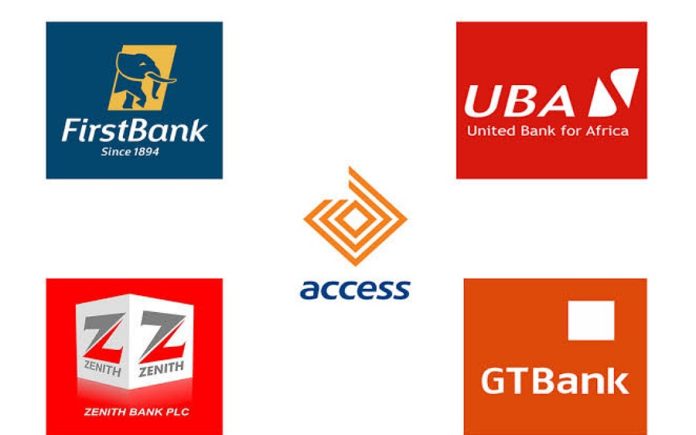The combined total assets of Nigeria’s top five banks rose by over 55% this year, reaching N146.34 trillion by the end of the third quarter of 2024, according to unaudited financial statements.
This asset growth was largely driven by increased lending, as higher customer deposits spurred the banks’ appetite for loan issuance. The Central Bank of Nigeria’s cash reserve ratio policy further supported this expansion in loan portfolios.
Customer loans across these five leading banks grew by 44.18% year-to-date, totaling N41 trillion. Access Holdings contributed significantly, accounting for 28.7% of the total loans extended by these banks. In contrast, GTCO was the lowest lender in the group, contributing just 7% to the aggregate loan figure. Loans represented 28.23% of the total assets of these tier-1 banks by the end of the nine-month period in 2024.
Profitability also surged, with the top banks collectively increasing their profit by 97% year-on-year, totaling N3.43 trillion. This robust earnings growth was driven by adjustments in loan interest rates to reflect shifting market conditions. Despite challenging economic conditions, Nigerian banks have benefitted from successive interest rate hikes as part of the central bank’s tightening policy to counter double-digit inflation. At the latest policy meeting, interest rates were raised to 27.25%, with further hikes anticipated, according to Fitch Ratings.
Among the top performers, GTCO led in profitability, achieving a year-on-year profit increase of over 195% to N1.085 trillion. While its loan book was the smallest at N3.02 trillion, GTCO held a substantial N2.632 trillion in shareholders’ equity, up from N1.477 trillion at the beginning of the year. GTCO accounted for 31.6% of the tier-1 banks’ combined profit.
Zenith Bank ranked second in terms of profit, which climbed 90.5% year-on-year to N827 billion by the end of the third quarter. Zenith’s total assets grew from N20.368 trillion to N30.38 trillion year-to-date, with loans to customers rising to N9.4 trillion from N6.556 trillion.
FBN Holdings followed with a 126% year-on-year increase in profit to N534 billion, up from N236 billion in the prior year. The growth was primarily supported by a significant rise in interest income and additional non-interest income. The bank’s loan book expanded by more than 47% year-to-date.
UBA was next in terms of profitability, with net income growing 16.9% year-on-year to N525 billion from N449.3 billion. UBA’s profit growth was the slowest among the five, even as its loan book expanded by about 47% over the past year.
Access Holdings, Nigeria’s largest bank by assets, posted an 83% profit growth to N458 billion, up from N250 billion in the previous period. Its loan book rose nearly 48% year-on-year to reach N11.861 trillion, though its profit growth was the lowest among the tier-1 banks.














